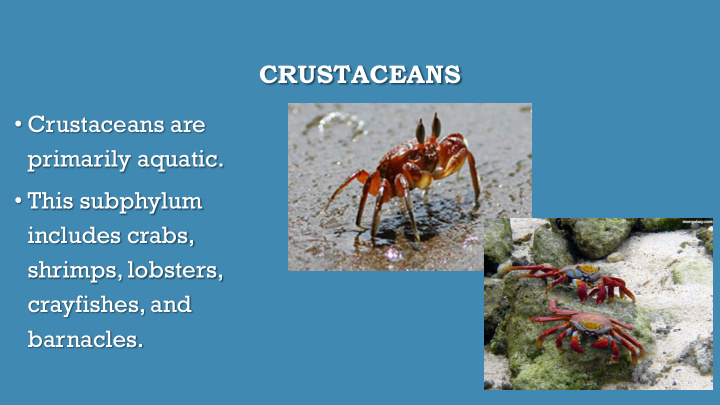



CRUSTACEANS • Crustaceans are primarily aquatic. • This subphylum includes crabs, shrimps, lobsters, crayfishes, and barnacles.
• Crustaceans typically have • two pairs of antennae • two or three body sections • Chewing mouthparts called mandibles.
TYPICAL CRUSTACEAN • Body is divided into a cephalothorax • Fusion of head and thorax • Thorax is behind the head and houses the internal organs • Abdomen • Posterior part of body
• In a crustacean, the first two pairs of appendages are antennae.
• The third pair of appendages are the mandibles. • A mandible is a mouthpart adapted for biting and grinding food.
• Decapods have five pairs of legs. • In crayfishes, the first pair of legs, called chelipeds, have large claws that catch, pick up, crush, and cut food.
• Along the abdomen are several pairs of swimmerets, which are flipperlike appendages used for swimming.
• The final abdominal segment is fused with a pair of paddlelike appendages to form a large, flat tail.
BARNACLES • Sessile • Lost abdominal segments • Do not use mandibles • Use appendages to capture and draw food particles into their mouth
More recommend